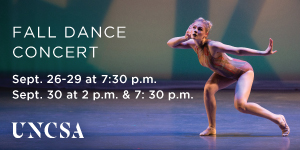Saint Stephen’s Episcopal Church, in the Hope Valley section of Durham, has a long history of presenting rising and established musical talent. The local area has produced an above average number of significantly talented youngsters including, Andrew Tyson, this Concert Series’ piano recital soloist. Tyson made his orchestra debut at the age of 15 at the Eastern Music Festival with the Guilford Symphony Orchestra as a winner of the festival’s concerto competition. He studied locally with UNC’s Thomas Otten. While earning his Bachelor’s degree from the Curtis Institute of Music, he studied with Claude Frank. He is currently a master’s student at The Juilliard School with Robert McDonald. Among Tyson’s impressive roster of prizes are the National Chopin Foundation in Miami and the First Prize of the 2011 Young Concert Artists International Auditions. CVNC has reviewed many of his Triangle appearances as concerto soloist, chamber musician, and recitalist.
Saint Stephen’s printed programs are always deluxe affairs. Tyson’s program contained an insert strip announcing a fortuitous change, the scheduled middle selections of Robert Schumann’s Vogel als Prophet, Op. 82/7 and Faschingsschwank aus Wien, Op. 26 were replaced by the Prélude, Choral et Fugue by César Franck. Tyson said he realized this would be a more apt fit with the rest of the program; J. S. Bach’s (1685-1750) Partita No. 1 in B-flat, S.825, and the 24 Préludes by Frédéric Chopin (1810-49), which were inspired by Bach’s Well-Tempered Clavier.
A splendid Steinway furnished by Hopper Pianos gave Tyson plenty of scope.
In Bach’s time, “partita,” was just one of several terms used by his contemporary composers, according to Michael Steinberg’s 2002 program notes for Richard Goode’s complete CD set, for suites of dance music “in a basic pattern: Allemande-Courante-Sarabande-XXX-Gigue, with XXX representing some other sort of dance or even non-dance movement.” Bach’s First Partita was composed earlier than the other five and is lighter in texture and simpler in structure. On the title page Bach states he is offering “refreshment for the spirits of lovers of music.” Tyson’s performance of the “Präludium” was taken at a moderate tempo and immediately impressed with the clarity of his playing and the refinement of his palette of keyboard color. The faster paced “Allemande” flowed beautifully and was very cleanly articulated. These qualities were even more evident in the more rapid “Corrente” which followed. The slow, measured tempo of the “Sarabande” was the highlight of the piece with Tyson’s carefully nuanced dynamics and exquisite tone. The pair of Minuets was delightfully done while the cleanly played triplets and the showy hand-crossing of the concluding “Gigue” capped a remarkably individual and mature interpretation.
At the informative pre-concert lecture, Tyson said the Prélude, Choral et Fugue of Franck complemented this program because it was an extreme 19th century Romantic implementation of the older baroque forms of Bach’s era. Tyson described the chorale as being so unlike a chorale and it underpins both the opening and last sections. The pianist is remarkably restrained and economical as he played, sitting erect with the hands held close to the keys. His ability to conjure up huge tsunamis of sound with a seemingly minimum of effort was amazing. In this, he reminded me very much of his teacher, Claude Frank. Tyson’s performance was breathtaking in its visceral power.
Tyson said Chopin was inspired to compose his 24 Préludes, Op. 28 by the model of Bach’s Well-Tempered Clavier. While Bach arranged his pieces chromatically in all 24 major and minor keys, Chopin’s set of short pieces, suggesting an idea or emotion, are arranged in the circle of fifths (with major preceding relative minor). Tyson said each short work― No. 9 is only 12 measures while the longest No. 17 is 90 measures― is complete and tells a story or portrays an emotion. The fast, light-hearted ones have an unsettling undercurrent while slower ones are dark in mood. Asked about the over-all meaning of Op. 28, Tyson said it was very dark and unsettling.
The infinite and subtle range of Tyson’s dynamics and kaleidoscope of color was breathtaking as was the depth of emotions with which he invested each prelude.
Note: Tyson returns to St. Stephen’s on January 8 for a concert with violinist Nicholas Kitchen. For details, click here.











